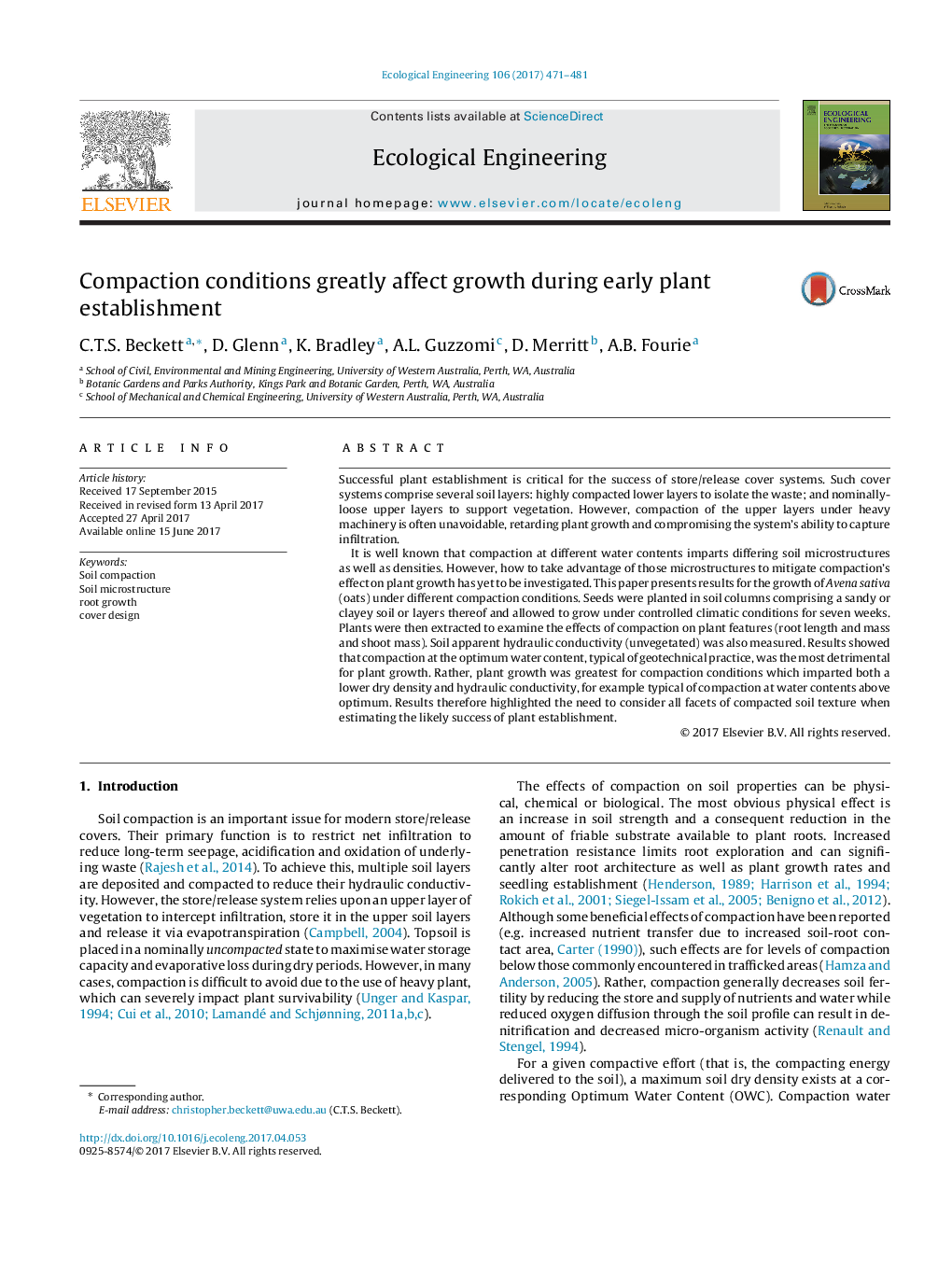| Article ID | Journal | Published Year | Pages | File Type |
|---|---|---|---|---|
| 5743865 | Ecological Engineering | 2017 | 11 Pages |
Successful plant establishment is critical for the success of store/release cover systems. Such cover systems comprise several soil layers: highly compacted lower layers to isolate the waste; and nominally-loose upper layers to support vegetation. However, compaction of the upper layers under heavy machinery is often unavoidable, retarding plant growth and compromising the system's ability to capture infiltration.It is well known that compaction at different water contents imparts differing soil microstructures as well as densities. However, how to take advantage of those microstructures to mitigate compaction's effect on plant growth has yet to be investigated. This paper presents results for the growth of Avena sativa (oats) under different compaction conditions. Seeds were planted in soil columns comprising a sandy or clayey soil or layers thereof and allowed to grow under controlled climatic conditions for seven weeks. Plants were then extracted to examine the effects of compaction on plant features (root length and mass and shoot mass). Soil apparent hydraulic conductivity (unvegetated) was also measured. Results showed that compaction at the optimum water content, typical of geotechnical practice, was the most detrimental for plant growth. Rather, plant growth was greatest for compaction conditions which imparted both a lower dry density and hydraulic conductivity, for example typical of compaction at water contents above optimum. Results therefore highlighted the need to consider all facets of compacted soil texture when estimating the likely success of plant establishment.
